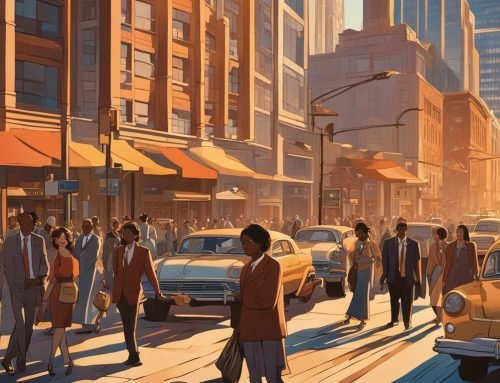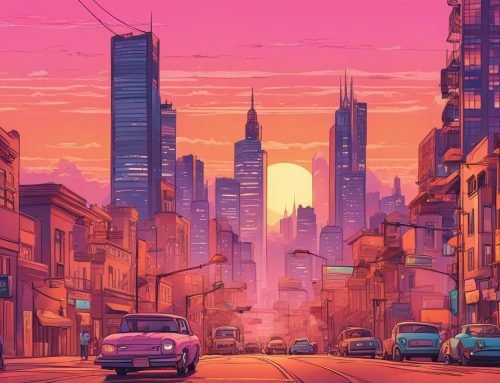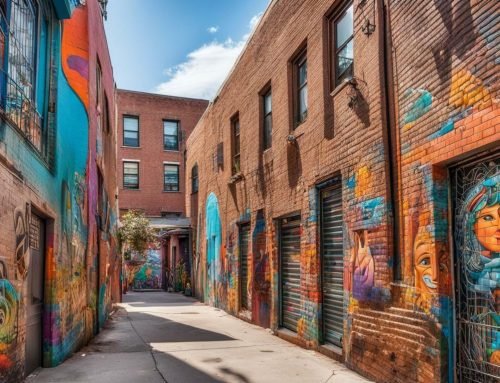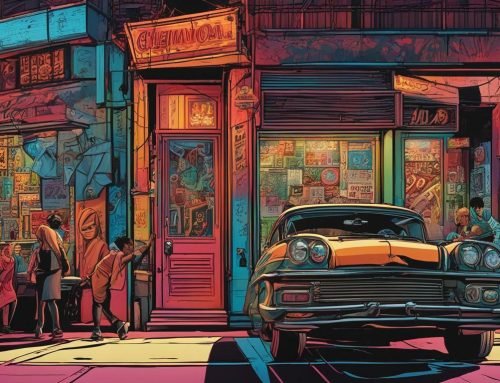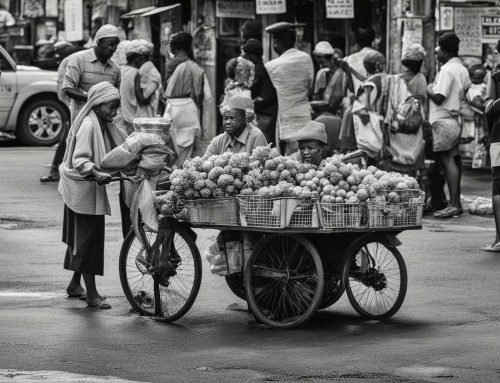Street photography is all about capturing the essence of urban life through the lens of a camera. It requires a keen eye for detail, impeccable timing, and the right equipment to capture moments that may never happen again. In this section, we will explore the essential street photography equipment every photographer needs to take extraordinary photos.
Whether you’re shooting on the streets of New York City or a small town, having the right gear is crucial. From cameras and lenses to accessories and editing software, investing in quality equipment can take your photos from good to great.
In the following sections, we will discuss how to choose the right camera for street photography, recommended lenses, essential accessories, and post-processing tips. We will also provide insights on how to overcome common challenges faced by street photographers and how to develop your personal style.
Key Takeaways
- Street photography requires the right equipment to capture exceptional shots in urban environments.
- Investing in quality gear, such as cameras, lenses, and accessories, can take your photos to the next level.
- In the following sections, we will explore how to choose the right camera for street photography, recommended lenses, essential accessories, and post-processing tips.
Choosing the Right Camera for Street Photography
In street photography, having the right camera gear is essential for capturing stunning urban images. But with so many camera options available, it can be challenging to choose the best one. Here are some tips to help you select the perfect street photography camera and find the right camera settings.
Camera Gear Recommendations for Street Photography
When it comes to street photography camera gear, there are several types of cameras to choose from, including:
| Type of Camera | Advantages | Disadvantages |
|---|---|---|
| DSLR | Fast autofocus, high image quality, versatility | Bulky, conspicuous, loud shutter sound |
| Mirrorless | Lightweight, compact, silent shutter, excellent image quality | Expensive, limited battery life, limited lens selection |
| Compact | Small and discreet, easy to carry, affordable | Limited image quality and manual controls |
Ultimately, the ideal camera for street photography will depend on your personal preferences and shooting style. However, mirrorless cameras are often a popular choice due to their compact size and excellent image quality.
Camera Settings for Street Photography
Once you have chosen your street photography camera, the next step is to select the best camera settings. Here are some tips:
- Use a fast shutter speed to capture sharp images, especially when photographing people in motion.
- Shoot in manual mode to have full control over your camera settings, including aperture, shutter speed, and ISO.
- Adjust your ISO to suit the lighting conditions of your environment, but try to keep it as low as possible to avoid noise and grain in your images.
- Consider shooting in burst mode to capture multiple images quickly, allowing you to choose the best shot later.
- Experiment with different white balance settings to achieve the desired colour tone of your images.
With the right camera and settings, you can capture stunning street photography images that showcase the beauty and diversity of urban environments.
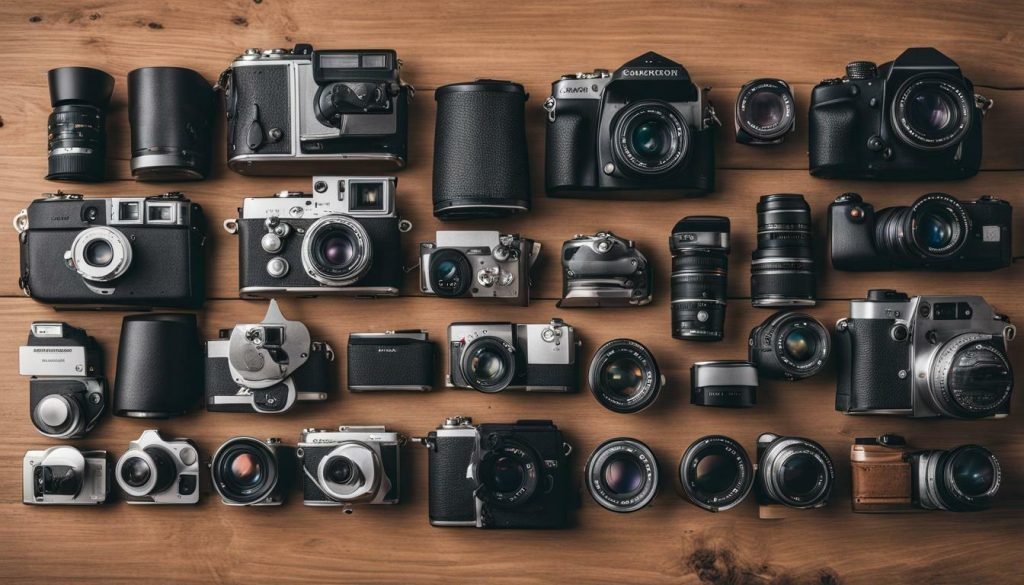
Recommended Lenses for Street Photography
Choosing the right lens for street photography is crucial to capturing the perfect shot. A good lens should allow you to capture a moment in time, without disrupting the natural flow of the scene. When it comes to street photography lens recommendations, there are several options to consider.
Prime Lenses
Prime lenses are a great option for street photography due to their versatility and sharpness. They are fixed focal length lenses, meaning they have a single focal length, such as 35mm or 50mm. This makes them lightweight and compact, perfect for capturing candid shots without drawing too much attention to yourself. A 35mm or 50mm prime lens is a great starting point for street photography as they offer a natural field of view that closely matches what the human eye sees.
Another advantage of prime lenses is their wide aperture, which allows for shallow depth of field and beautiful bokeh. This is especially useful when shooting in low light conditions, as it allows you to use faster shutter speeds without sacrificing image quality.
Zoom Lenses
Zoom lenses are another popular choice for street photographers as they offer greater flexibility in framing your shots. They allow you to zoom in or out to adjust your composition without moving closer or further away from your subject physically. This flexibility is beneficial when shooting in crowded areas or changing your framing quickly.
A good zoom lens option for street photography is 24-70mm or 24-105mm. These lenses provide a wide-angle to medium telephoto range, making them ideal for capturing more expansive scenes and tightly framed shots.
Choosing the Right Aperture
The aperture of your lens is another important consideration when it comes to street photography. A wider aperture, such as f/1.8 or f/2, will allow more light to enter the lens, making it easier to shoot in low-light conditions. However, it will also result in a shallower depth of field, which can be both an advantage and disadvantage depending on the desired effect.
On the other hand, a narrower aperture, such as f/8 or f/11, will result in a greater depth of field, keeping more of the scene in focus. This is useful when shooting street scenes with multiple subjects in the frame or when you want to capture the entire environment in detail.
Overall, the best street photography lens for you will depend on personal preference, shooting style, and budget. However, a prime or zoom lens with a wide aperture and a versatile focal length is a great starting point for capturing stunning street photography shots.
Essential Accessories for Street Photographers
Street photography requires minimal equipment, but a few essential accessories can make all the difference. These accessories can enhance the street photography experience, provide comfort, and protect your gear.
Here are some must-have accessories for street photographers:
| Accessory | Description |
|---|---|
| Camera strap | A comfortable and sturdy camera strap can prevent fatigue during long hours of shooting and provide extra security for your camera. |
| Tripod or monopod | A tripod or monopod can help stabilize your camera in low-light situations or when shooting with slow shutter speeds. |
| Filters | Filters can help control light and create unique visual effects, such as polarizers, neutral density filters, and color filters. |
| Battery packs | Extra battery packs can ensure that you never run out of power in the middle of a shoot. |
| Rain covers | Rain covers protect your camera and lens from rain, snow, and other elements. |
Investing in these accessories can improve your street photography and increase your gear’s lifespan. However, it’s essential to remember that the best accessory is a creative eye and a passion for capturing the essence of urban life.
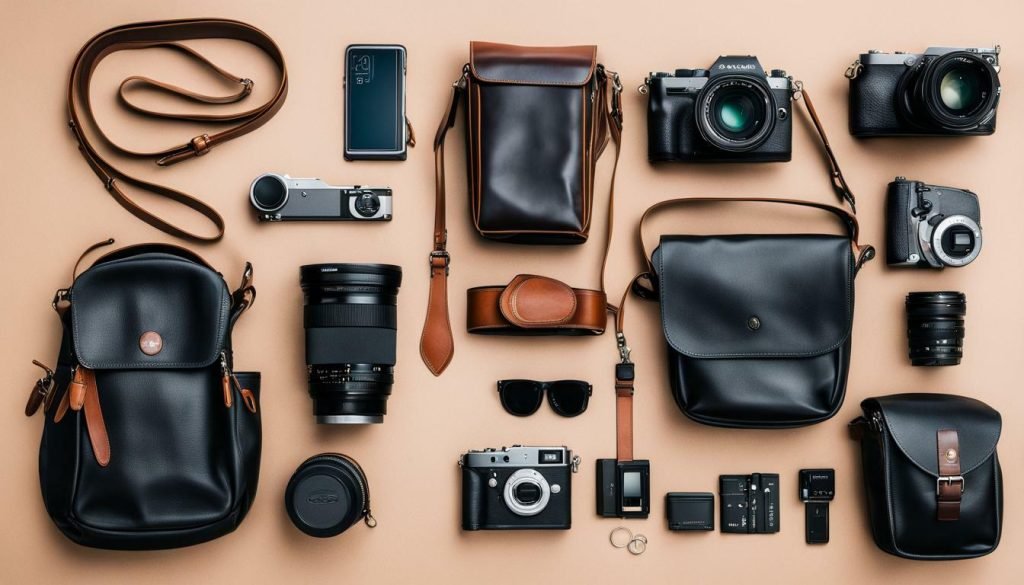
Mastering Composition in Street Photography
Street photography is more than just capturing candid moments – it’s about creating a visually striking image that tells a story. Composition is a crucial aspect of street photography, which can make or break a photo. Here are some street photography composition tips and techniques to help you elevate your skills:
Framing
Framing uses elements within the scene to draw the viewer’s eye towards the main subject naturally. This can be achieved by using doorways, windows or even pieces within the environment, such as trees or street lamps, to create a frame. The frame should not overwhelm the subject but complement it. This technique can make a sense of depth and add interest to a photograph.
Leading Lines
Leading lines are a powerful tool to guide the viewer’s eye through the image. In street photography, leading lines can be the lines of a street or the direction in which people are walking. This technique draws the viewer’s attention to the subject and gives the image a sense of motion or law.
The Rule of Thirds
The rule of thirds divides the image into thirds, both horizontally and vertically, creating a grid. The main focal point of the image is usually placed at one of the intersection points, making a more dynamic and visually appealing appearance. You can use this rule to compose your shot by identifying the main subject at one of the intersection points or aligning lines or objects along the grid lines.
Using these street photography composition tips and techniques, you can create images that capture the essence of life on the streets. Remember, the most critical aspect of street photography is to have fun and experiment with different styles and techniques to develop your unique vision.
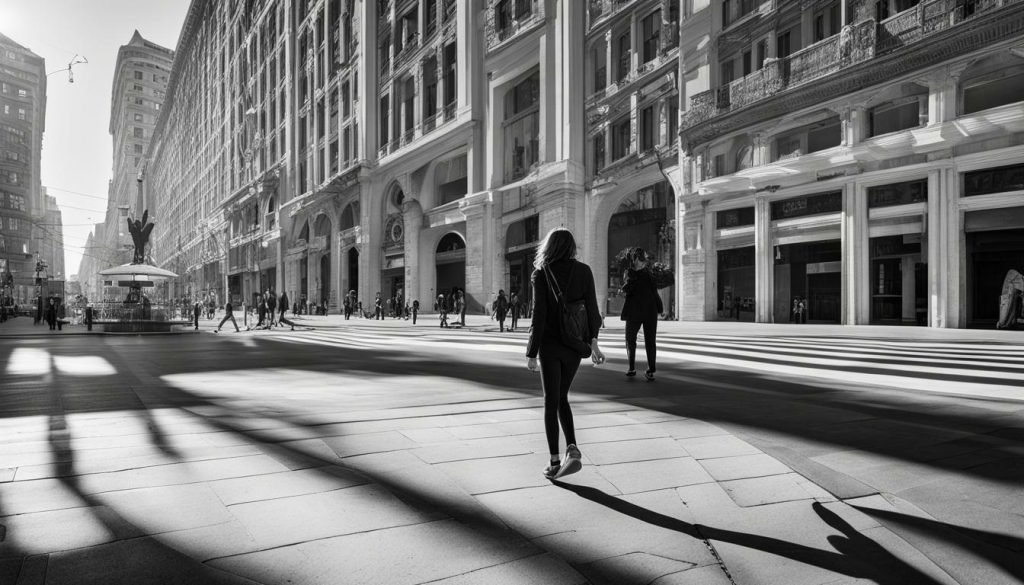
Capturing Emotion and Storytelling in Street Photography
Street photography is not just about capturing images of urban landscapes or architecture but also about telling stories and evoking emotions. With the right approach, street photographers can create compelling narratives that capture the essence of city life and the human experience. Here are some tips on how to capture emotion and storytelling in street photography:
- Observe your surroundings: To capture emotions and stories, you must be aware of your environment. Take the time to explore and observe the people and surroundings around you. This will help you identify potential subjects and scenarios to document.
- Look for candid moments: Candid shots often capture genuine emotions and can tell meaningful stories. Try to capture people when they are engaged in an activity or interacting with others, as these moments can reveal much about their personality and emotions.
- Focus on details: Sometimes, minor details can tell the most significant stories. Look for interesting information in your surroundings, such as graffiti, street signs, or discarded objects. These can add depth and context to your photos.
Remember, street photography is about capturing real life, so don’t be afraid to experiment with different techniques and approaches to find what works for you. Whether experimenting with different compositions or capturing candid moments, the key is to evoke emotion and tell a story through your images.
“Photography is not about the camera, it’s about telling a story through a single frame.” -Brett Florens
Using these tips, you can develop your style and approach to storytelling in street photography. Whether you want to capture the hustle and bustle of city life or the quiet moments that reveal hidden stories, street photography offers endless opportunities for creative expression. So go out there, explore your surroundings, and start telling your own stories through your camera’s lens!
Overcoming Challenges in Street Photography
Street photography can be an exciting and rewarding genre but it comes with challenges. Whether you’re dealing with difficult lighting conditions or trying to capture candid shots of strangers, there are a few common obstacles that street photographers must learn to navigate. Here are some street photography tips to help you overcome these challenges:
1. Difficult Lighting Conditions
One of the biggest challenges in street photography is dealing with tricky lighting conditions. Whether shooting on a bright sunny day or in the dim light of dusk, getting the exposure right can be brutal. To overcome this challenge, you may want to invest in a camera with good low-light capabilities or consider using a flash. Alternatively, you can experiment with different shooting modes, such as aperture priority or shutter priority, to achieve the desired results.
2. Capturing Candid Shots
Capturing candid shots of strangers can also be challenging, especially when dealing with camera-shy subjects. One way to get around this is to use a longer focal length lens to capture people from a distance. Alternatively, you can try blending in with the crowd and using a more miniature, less conspicuous camera to capture shots without attracting too much attention.
3. Overcoming Fear
Many street photographers struggle with the fear of photographing strangers without their consent. To overcome this challenge, it’s important to remember that street photography is legal in most places and that people in public spaces generally don’t have an expectation of privacy. However, it’s always important to be respectful and considerate of your subjects and to avoid photographing anyone who appears uncomfortable or unwilling.
By keeping these challenges in mind and following these street photography tips, you can improve your skills and capture amazing shots in urban environments.
Post-Processing Tips for Street Photography
Post-processing is a crucial stage of street photography, enabling photographers to enhance the visual impact of their images and create a unique style. Here are some street photography editing techniques to optimize your shots during post-production:
1. Adjust the Exposure
The exposure of your street photography images can make a significant difference to the final output. Adjust the brightness, contrast, and shadows to create a balanced exposure that highlights the details and tones in the image. You can also use the adjustment brush to adjust specific areas of the picture selectively.
2. Crop and Straighten
Cropping your street photography images can help to remove unwanted distractions and create a more focused composition. Use the cropping tool to adjust the frame and the straighten tool to align the horizon or vertical lines in the image.
3. Use Presets and Filters
Presets and filters can help to create a consistent style across your street photography portfolio. Experiment with different presets and filters to achieve your images’ desired effect and mood. You can create your own presets or use ready-to-use options available in editing software.
4. Adjust Color and Saturation
Color and saturation can be adjusted to enhance the mood and aesthetic of your street photography images. Use color adjustments or HSL sliders to change the image’s colors selectively. You can adjust the saturation and vibrance to create a more intense or muted effect.
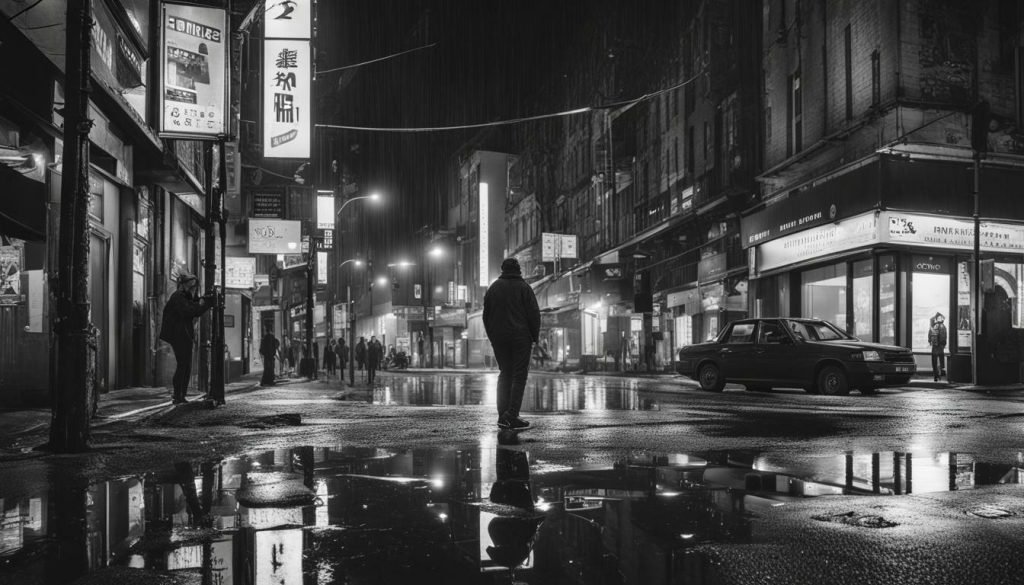
5. Apply Sharpening and Noise Reduction
Sharpening and noise reduction can help to enhance the details and reduce the unwanted noise in your street photography images. Use the sharpening tool to enhance the edges and details in the picture and the noise reduction tool to reduce the noise in low-light or high-ISO photos.
Post-processing is a personal and creative stage of street photography that can help you develop a unique style and aesthetic. Experiment with different editing techniques and find the best ones for your vision and style.
Showcasing Your Street Photography Work
As a street photographer, showcasing your work effectively is crucial to building your portfolio and gaining recognition in the field.
Creating a website or online portfolio is one of the best ways to present your street photography. This allows potential clients and collaborators to view and appreciate your work quickly. You can also use social media platforms like Instagram to reach a wider audience. Maintaining a cohesive theme and aesthetic throughout your online presence is essential to showcase your brand or personal style.
Participating in exhibitions or competitions is another excellent way to gain exposure and recognition. Look for opportunities in your local area or on photography websites and forums. This can also be a perfect opportunity to meet other photographers and gain insights into the industry.
When sharing your work, acknowledge and respect your subjects’ privacy, especially if they are recognizable individuals. Always obtain permission before sharing photos of people, and consider blurring or cropping faces if necessary.
Remember always to credit yourself as the photographer when sharing your work, and include a brief description or story behind the photo to add context and interest.
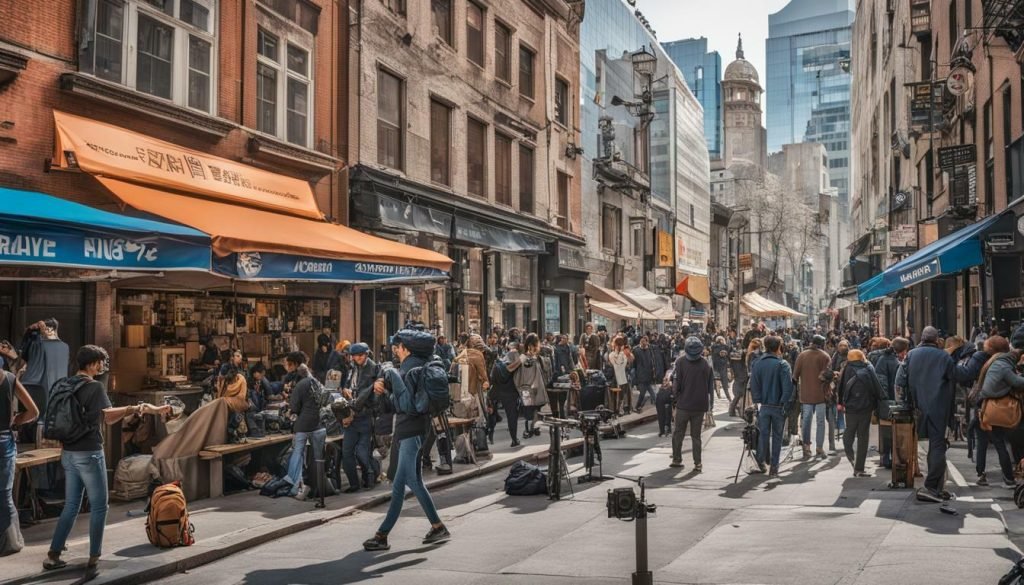
By presenting your street photography professionally and respectfully, you can attract potential clients and collaborators and gain recognition in the industry.
Staying Inspired and Finding Your Style in Street Photography
Street photography is a constantly evolving genre that requires photographers to stay inspired and experiment with their style. Whether you are a beginner or a seasoned professional, it is essential to keep yourself motivated and find your unique voice in street photography. Here are some tips to help you stay inspired and develop your style:
Explore New Locations
Exploring new locations is a great way to stay inspired and gain new perspectives on street photography. Walk around your town or city and look for exciting areas you have not explored before. The busier the site, the more opportunities you will have to capture unique moments and scenes.
Study the Work of Master Photographers
Studying the work of master photographers can help you gain new insights into street photography and inspire you to try new techniques and approaches. Look for the creation of photographers such as Henri Cartier-Bresson, Joel Meyerowitz, and Garry Winogrand, and study their compositions, use of light and shadow, and storytelling skills.
Experiment with Different Styles
Experimenting with different styles can help you find your unique voice in street photography. Try different approaches and see what works best, whether you prefer black and white, color, or combining both. You can also experiment with different lenses, focal lengths, and camera settings to create a unique style.
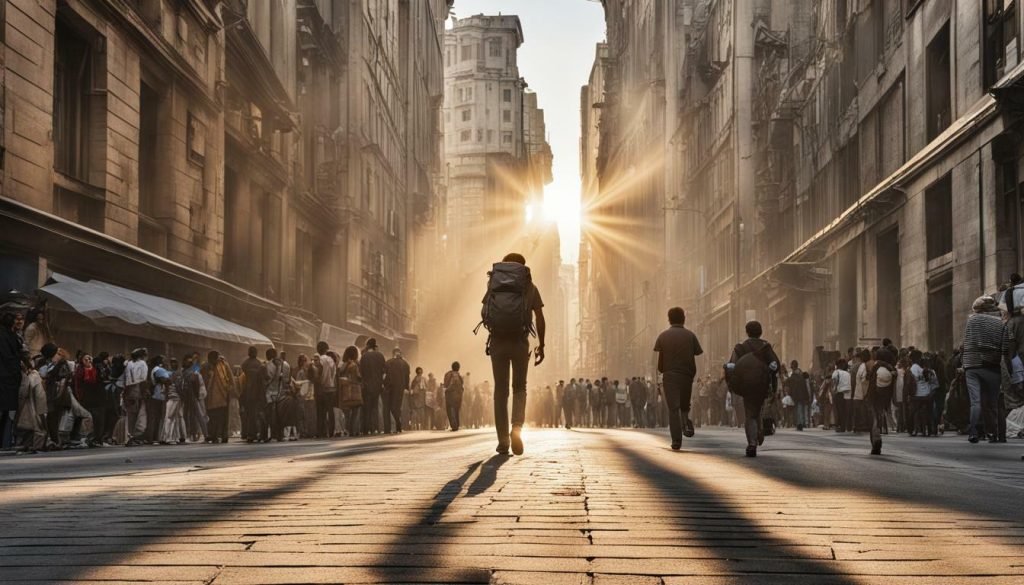
Staying inspired and finding your style in street photography is an ongoing journey that requires dedication, patience, and perseverance. Take your time, enjoy the process, and don’t be afraid to make mistakes or try new things. With practice and persistence, you can develop a personal style that sets you apart from the crowd and captures the essence of urban life.
Conclusion
In conclusion, street photography can be a challenging yet rewarding genre of photography. The right equipment, including a suitable camera, lens, and essential accessories, is crucial for capturing exceptional shots in an urban environment.
Mastering composition and storytelling skills and overcoming common challenges, such as capturing candid shots and dealing with tricky lighting, will help elevate your street photography game. Additionally, post-processing techniques can help enhance the visual impact of your photos.
You can create a cohesive portfolio to showcase your work, share your photos on social media, and participate in exhibitions or competitions. Finally, staying inspired and developing a personal style are essential for growing as a street photographer.
As you continue to explore the world of street photography, remember to observe and document the human element of urban life. Using your camera to tell compelling stories, you can create meaningful and impactful images that will captivate your audience.
FAQ
Q: What is street photography equipment?
A: Street photography equipment refers to the gear and accessories photographers use to capture candid and spontaneous moments in public places. This can include cameras, lenses, accessories, and post-processing tools.
Q: What is the essential street photography equipment for every photographer?
A: The essential street photography equipment includes a camera, preferably a small and discreet one, a versatile lens, such as a prime or zoom lens, and accessories like camera straps and filters.
Q: How do I choose the right camera for street photography?
A: When choosing a camera for street photography, consider size, weight, image quality, and ease of use. Depending on your preferences and shooting style, DSLRs, mirrorless, and compact cameras can all be suitable options.
Q: What are the recommended lenses for street photography?
A: Recommended lenses for street photography include wide-angle lenses, such as 35mm and 50mm prime lenses, allowing you to capture a broader perspective of the surroundings. However, the lens choice ultimately depends on your style and the desired effect.
Q: What are the essential accessories for street photographers?
A: Essential accessories for street photographers include camera straps for easy carrying, tripods for stability, and filters to enhance the image quality. These accessories can significantly improve your street photography experience.
Q: How can I master composition in street photography?
A: To master composition in street photography, focus on techniques such as framing, leading lines, and the rule of thirds. Experiment with different perspectives and angles to create visually compelling compositions.
Q: How do I capture emotion and storytelling in street photography?
A: Capturing emotion and storytelling in street photography requires observing human interactions and documenting them in a way that tells a compelling narrative. Pay attention to gestures, facial expressions, and the overall atmosphere of the scene.
Q: What challenges can I expect in street photography?
A: Common challenges in street photography include dealing with tricky lighting conditions, capturing candid shots without intruding, and overcoming the fear of photographing strangers. With practice and experience, you can overcome these challenges and improve your street photography skills.
Q: What are some post-processing tips for street photography?
A: Post-processing tips for street photography include adjusting exposure, enhancing colors, and sharpening the image. Experiment with different editing techniques to achieve the desired visual impact while maintaining the authenticity of the captured moment.
Q: How can I effectively showcase my street photography work?
A: To effectively showcase your street photography work, create a cohesive portfolio highlighting your best images. Utilize social media platforms to share and engage with a broader audience, and consider participating in exhibitions or competitions to gain exposure.
Q: How can I stay inspired and find my style in street photography?
A: To stay inspired in street photography, explore new locations, study the work of master photographers, and experiment with different styles and techniques. Finding your style takes time and practice, so be open to trying new approaches and refining your vision.

